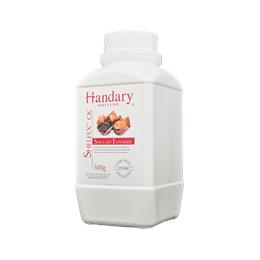Description
Bread and biscuits are baked goods made from flour, water, and other ingredients. Bread is a staple food with a crusty exterior and soft crumb, while biscuits are sweet or savoury treats with a crispy texture. They are enjoyed worldwide as snacks or accompaniments to meals.The main spoilage issues in bread and biscuits are mold growth, crumb staling and rancidity. Proper storage and good manufacturing practices are essential to prevent spoilage and maintain the quality of these baked goods.
Yeasts & Molds
Yeast and mold are microorganisms that can be found in breads and biscuits. Yeast is commonly used in bread baking to help the dough rise, while mold can grow on bread and other baked goods if they are not stored properly or if they are past their shelf life.
Yeast is a type of fungus that ferments the sugars in dough, producing carbon dioxide gas that causes the dough to rise. Yeast is typically added to bread dough along with flour, water, salt, and other ingredients. There are two main types of yeast used in bread baking: active dry yeast and instant yeast.
Mold is a type of fungus that can grow on bread and other baked goods if they are stored in warm, moist environments. Mold spores can be present in the air, and they can settle on bread and begin to grow if the conditions are right. Mold can cause bread to become discolored and develop a musty odor, and it can also produce mycotoxins that can be harmful if ingested.
Crumb Staling
Crumb staling is a common problem in breads and biscuits. It refers to the loss of freshness and softness in the crumb, or interior, of baked goods over time. This can make breads and biscuits hard, dry, and difficult to chew.
Crumb staling is caused by a number of factors, including the loss of moisture in the crumb, the recrystallization of starch molecules, and the reorientation of gluten proteins. As breads and biscuits age, the moisture in the crumb evaporates, causing the crumb to become dry and stiff. Meanwhile, the starch molecules in the crumb begin to recrystallize, forming a rigid network that further contributes to the hardening of the crumb. In addition, the gluten proteins in the crumb can reorient themselves into a more rigid structure, further contributing to the stiffening of the crumb.
Rancidity
Rancidity is another common problem in breads and biscuits. It refers to the development of off-flavors and odors caused by the oxidation of fats and oils in baked goods. Rancidity can make breads and biscuits taste and smell unpleasant, and it can also reduce their nutritional value.
Rancidity in breads and biscuits is caused by the oxidation of unsaturated fats and oils, which are present in ingredients such as butter, margarine, and vegetable oils. When these fats and oils are exposed to oxygen and heat, they undergo a chemical reaction that results in the formation of off-flavors and odors.
 English
English 简体中文
简体中文 Français
Français Español
Español





